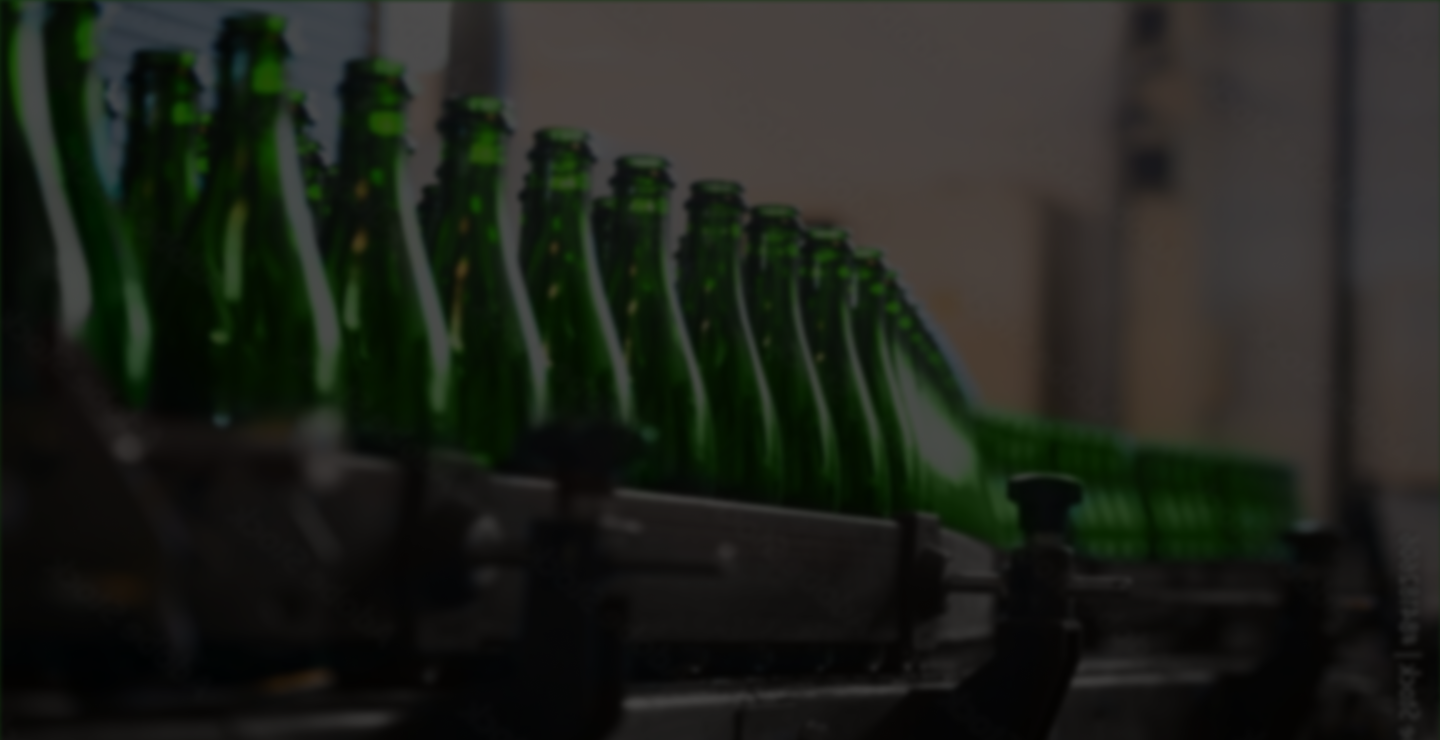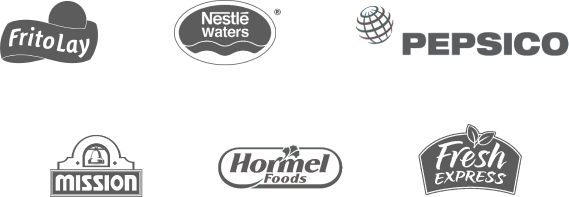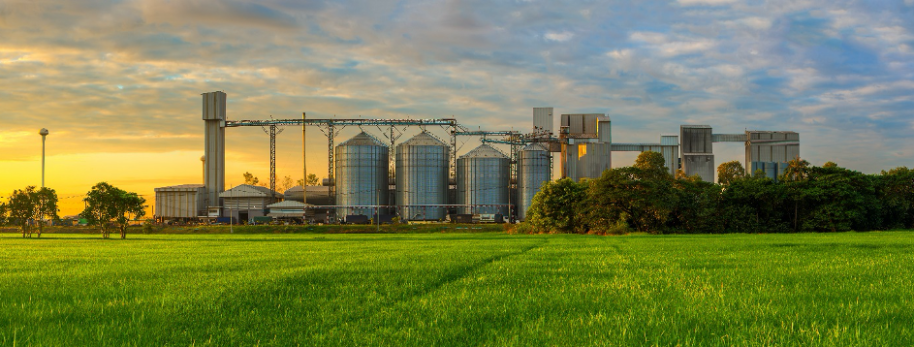
Extensive design-build knowledge for the complex food and beverage industry
Trust our food and beverage know-how.
With years of experience working with top-tier food and beverage manufacturers, we’re experts in the safety, regulatory, and technical needs of your facility design and construction.
$104.7M
in Food + Beverage experience30.8M
Food + Beverage square feet240+
Food + Beverage projectsYou'll be in good company.

Expert solutions for some of the top food and beverage companies in North America.



Food & Beverage
Frito-Lay North America hired C1S Group to replace the existing chillers 1 and 2 with two 750-ton high-efficiency chillers with VFDS.
Partner with the experts.
We're ready for every facility challenge and partner with you to provide:
Proven engineering and construction management on one team
Deep knowledge of the food and beverage industry
Expertly coordinated plant shutdowns for timely upgrades
Top-rated safety program and zero-accident culture
Ongoing communication and collaboration to keep your project on track

We help you stay on top of the latest food and beverage trends.


When it comes to food and beverage manufacturing, producing safe, quality food is of the utmost importance with each and every run. But, when disruptions like a global pandemic or a natural disaster hit, monitoring these lines and ensuring safety and quality becomes challenging. That’s why it’s critical today’s food and beverage manufacturers implement the latest technologies. It’s emerging technologies like augmented reality (AR), warehouse management systems (WMS) and enterprise resourcing planning (ERP) solutions that help companies measure, improve and elevate the way they get product out the door, especially when employees are removed from the facility and forced to track these measurements from afar. Here are three technologies projected to catapult the food and beverage industry to the next level. Augmented reality and virtual reality AR and virtual reality (VR) deliver more than meets the eye. From glasses to sensors to other wearables, these three-dimensional platforms are expected to register a CAGR of over 65.3% by 2025, with the North American food and beverage market possessing an AI-adoption rate of approximately 29.1%. AR and VR provides visuals on the product, thus showcasing brand transparency. It removes the human error aspect of food processing, eases the learning curve and improves employee training. In fact, some adopters of VR-based employee training claim that virtual reality yields up to an 80% retention rate one year after an employee has been trained. Nearly 56% of business leaders polled said they have implemented some form of AR/VR technology into their organization over the last 12 months, another 35% are considering doing so and more than a quarter (27%) have fully deployed an AR/VR solution. What’s more, firms looking for more business are implementing AR/VR solutions to create 3D models of their facilities for both potential and current clients It’s these building information modeling (BIM) elements that allow engineers to design realistic models of their facilities, including documenting any out-of-spec measurements, capturing photos in real time, mitigating any re-work and possibly reducing lead time. Warehouse management systems WMS solutions prove to be even more essential now, as food and beverage e-commerce continues to shift upwards, with food and beverage e-commerce sales expected to reach 10-30% of total sales growth within the next five years, and retail channels only accounting for 37% by 2025—down from 46% today. That’s why the WMS market is projected to reach $5.1 billion by 2025. Many WMS solutions are implemented to help companies with order fulfillment, transportation performance, inventory control, labor management, yard management, dock management and supply chain management, among others. Several WMS systems even track lots, SKUs and supplier sourcing across multiple facilities and cold storage units, thus improving visibility along the supply chain. Enterprise resource planning software The global cloud ERP market is expected to grow 13.6% annually and reach $40.5 billion by 2025. ERP software is designed to provide a unified portal for the management of general contractors, subcontractors, financial management, construction accounting, payroll and service operations in one central database. That’s why, when a pandemic hits and upends the way companies operate, how they manage the financials of their food and beverage operation is critical. ERP systems provide greater productivity, increased profitability, improved total product quality and shorter manufacturing and distribution times. Cloud-based ERP systems also allow companies to cut costs and drive savings, while supporting a remote workforce. A 2020 survey of finance executives indicated that 20% expect to spend more on cloud ERP technologies to take advantage of the platform’s flexibility, functionality and easy deployment. Regardless of what’s in store for 2021, AR/VR, WMS and ERP technologies help food and beverage manufacturers track, trace, measure and secure safety and quality across the supply chain, whether they’re on site or in the comfort of their own home.


Building for a Safer Future Hygienic food plant design isn’t a new concept. Food and beverage manufacturers have been employing food safety systems for quite some time in order to control food safety hazards and mitigate risk and recall. However, despite the many food safety programs in place, food recalls still happen. That’s why hygienic building design can play a critical component in a company’s food safety plan. Here’s how. Food safety concerns – being proactive vs. reactive When it comes to hygienic building design, one thing is certain—combating product contamination occurs at the equipment and factory level. And, it involves being more proactive to issues upfront vs. waiting for an issue to arise and reacting accordingly. That’s why companies need to address airflow and space condition issues. They need to better safeguard ingredients and packaging materials. And, yes, they need to invest in hygienic building components, because the tops, bottoms and sides of a manufacturing plant matter in building for a safer future. “Designing buildings for security and safety requires a proactive approach that anticipates—and then protects—the building occupants, resources, structure and continuity of operations from multiple hazards,” according to the Whole Building Design Guide. In order to properly mitigate risk, here’s some things to consider: Spaces need to be properly pressurized to prevent infiltration from non-controlled spaces. Enough airflow to achieve recommended air changes per hour in the space. New “clean” air needs to be brought in at a certain rate to prevent recirculation and lingering of any potential contaminants. Supply air to the space properly conditions the space to prevent condensation. “On top of standard good design practices for food production spaces (washdown compliant, does not provide a space for contaminants to accumulate, building envelope is properly sealed, etc.), having a properly conditioned space is critical for inhibiting contamination,” says Jordan Meadows, engineering manager of C1S Inc. Additional hygienic design details involve implementing barrier technology that tracks transport vehicles, entryways/exits, floor drains and storm water collection and restricted areas. Up, out and on trend Despite the Coronavirus (COVID-19) pandemic, food and beverage processors continue to build, expand and renovate facilities. In fact, SalesLeads’ research shows 55 new planned food and beverage industry projects tracked during the month of June 2020, with 17 being new projects, 19 being expansions and 27 being renovations and/or equipment upgrades. This means that as the pandemic-proof food and beverage category continues to skyrocket, so too does the manufacturers’ need to produce quality food from safe, modernized plants. That’s why, food and beverage companies have recently put a significantly increased focus on preventing condensation, says Meadows. Condensation generates moisture, which could then damage equipment, impose food spoilage, and if left uncontrolled, can eventually lead to mold growth. “Microorganisms and contaminants should be assumed present in any accumulation of water that is not part of the production process or cleaning procedure,” he adds. “This means providing proper heating and cooling to have specific setpoints in the space, and also ventilating at a rate that evacuates steam before it can accumulate.” Every company can be one bad headline away from a food safety catastrophe. Mitigating risk and recalls starts in the plant. That’s why hygienic building design should be a critical component in a company’s food safety plan.


Enhancing safety, increasing efficiency and reducing costs are important goals to manufacturers. Dust collection systems can play a big role in accomplishing them. In a manufacturing setting, dust can affect the quality of the products produced, impact worker health, and even catch fire or explode. Dust collection is particularly important to industries such as: Chemical Pharmaceutical Petrochemical Wood Processing Food/Agricultural Paint/Coatings Often, industries with dust control systems have the responsibility to maintain appropriate particulate concentrations inside and outside a plant. This means that good air filtration and dust-collection systems are essential, along with effective analysis of the operations throughout the plant to ensure proper dust collection is occurring. Dust collection refers to the removal of solid particles from a flowing air stream in order to provide for the safety and health of employees, eliminate nuisance dust, deliver quality improvements and even to collect powdered products. Dust collectors are the equipment used to separate dust from the airstream and typically contain collection chambers designed to contain low concentrations of particulate, usually below the explosibility limit. Due to the combustibility of many types of particulate, dust collectors are a leading type of equipment to experience explosions, so taking appropriate safety precautions is critical. Designing a Dust Collection System The design and implementation of a dust collection system within an industrial context is governed by a variety of codes and standards devised by industry trade groups and governmental bodies, such as the U.S. Occupational Safety and Health Administration (OSHA) and the National Fire Protection Association (NFPA). So, understanding the specific standards and rules applicable to your industry is important. Dust collection system design is a multistage process that involves identifying the area requiring dust collection, the preferred location for equipment, devising the design criteria for electrical and mechanical systems, choosing the appropriate equipment and assessing the explosion risks. The first step is to identify equipment or areas requiring dust collection and determine the capture device that would work best for each area. The choices include an articulating arm, a direct connection to the equipment or a hood. Consider carefully the location of the dust collection equipment. If it is located in the interior of a building, it should be in a separate room dedicated to dust collection equipment only. Because most building owners don’t want to lose manufacturing space for dust collection equipment, it is highly likely you will have to use an exterior location. The electrical equipment required for a dust collection system must adhere to specific design criteria. These include controlling static electricity, grounding the equipment and providing vapor and dust-proof light fixtures. Furthermore, depending on the quantity and type of dust, you must decide whether to use “dust ignition-proof” or “dust-tight” equipment. Dust collection also requires special Class II wiring methods designed to protect against the combustibility of the dust, based on whether operating conditions exist that could produce explosive or ignitable mixtures. Duct Systems for Dust Collection Designing duct systems for dust collection involves considering capture velocity, sizing and system resistance. The velocity required to capture the dust emissions at the source without compromising the process or product will vary based on the process and the capture device. For example, capture velocity for mixing processes with liquids is below 500 FPM while it’s equal to conveying velocity if connected directly to the equipment. To appropriately size the ducts, determine the diameter of branch ducts by the size of the factory-installed collar on the equipment or by calculating the equivalent round diameter using the conveying velocity of the dust and the given airflow (CFM). To determine the diameter of the main duct, sketch out the ductwork route, start with the connection farthest from the dust collector and, moving inward, increase the main duct diameter at each duct junction. Ducts are constructed of either rigid or flexible materials. Rigid ducts are made of plastic, galvanized steel or stainless steel. In industrial applications, metal construction is recommended to reduce the chance of dangerous static electricity buildup. When elbows are required, the ideal maximum is 45 degrees. Flexible ducts are made of rubber or plastic hose and contain a metal grounding helix that MUST be grounded at each end to prohibit static electricity buildup. To determine the best dust collection equipment to use in a facility, consider the total system CFM, the location of the equipment (whether interior or exterior), whether there is compressed air or a compressor in use, and the type of controls used in the facility. Then, select from the common dust collector system types, which include: Bag Filters Cartridge Filters Cyclone Separators Electrostatic Precipitators Preventing Fires & Explosions Dust collection serves as an important method to prevent fires, as is illustrated in the “Fire Triangle” showing the elements needed for a fire. In our case, dust comprises the “fuel.” A dust explosion is most likely to occur when a dust cloud is ignited within a confined area. This explosion, however, can further disperse more dust, leading to a second explosion, which can be more dangerous and create more widespread damage than the first. To help prevent disaster, evaluate the explosion protection options available in light of the explosion risk of the processes occurring in the facility. To do this, know the Kst value of the materials used in the facility. The Kst value indicates the explosive properties of a material measured in the laboratory and is used to quantify the potential severity of a dust explosion. Kst is a relative index, so any material with a value above zero is considered at risk for an explosion. Other than silica and sand, all dust is potentially combustible to some degree. Dust explosion prevention options include a variety of measures that generally fit into three categories: inlet protection, outlet protection and explosion venting. Kst Values of Common Dusts Any value greater than zero is a potential explosion risk Tobacco: 12 (Weak Explosion) Wood Dust: 102 (Weak Explosion) Rice Starch: 190 (Weak Explosion) Wood Flour: 205 (Strong Explosion) Methyl Cellulose: 209 (Strong Explosion) Barley Grain Dust: 240 (Strong Explosion) Aluminum Powder: 400 (Very Strong Explosion) Magnesium: 508 (Very Strong Explosion) Inlet protection is achieved using one of these methods: Backdraft damper (most common) – will slam shut by the pressure forces of an explosion, creating a mechanical barrier. Fast-acting valve – closes within milliseconds of detecting an explosion, creating a mechanical barrier. Inlet/Outlet Chemical Isolation – reacts within milliseconds of detecting an explosion, creating a chemical barrier that suppresses the explosion within the ducting. Detect and Suppress – protects the dust collector from ignition sources such as sparks or embers. Outlet protection methods to prevent dust explosions include: Outlet Chemical Isolation – reacts within milliseconds of detecting an explosion, creating a chemical barrier that suppresses the explosion within the ducting. Integrated Safety Monitoring Filter – isolates downstream equipment from the progression of a flame front during an explosion. Allows the recirculation of exhaust air back into the work space when dust is explosive. High Speed Abort Gates – divert process air and/or smoke to a safe location outside when a possible ignition source is detected entering the system or when a fire is detected. Explosion Venting is the final method to prevent dust explosions: Explosion Vents – the vent opens when predetermined pressures are reached inside the dust collector, allowing the overpressure and flame fronts to exit to a safe area. Flameless Vents – extinguish the flame front exiting the vented area and won’t allow it to exit the device. These vents can be installed indoors and over a standard explosion vent. Chemical Suppression – reacts within milliseconds of detecting an explosion. It prevents expanding a deflagration by releasing a chemical agent. Used on indoor applications. Implementing the best dust collection system for your facility will create a safer and healthier environment for your employees, eliminate dust that interferes with producing quality products and prevent hazardous conditions that could lead to an explosion.

Get the scoop on shut down coordination in manufacturing plants.
Find the right solution for your food and beverage facility.
You can also give us a call at:
972.829.0148

